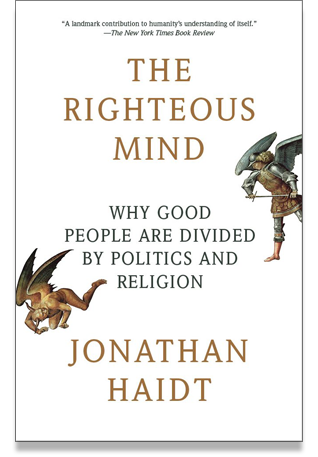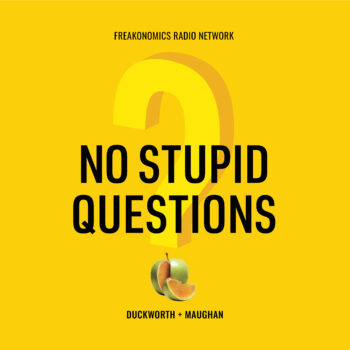Integrating Natural or knowledge of our natural world will be a transformation. A transformation is a thorough or dramatic change. W. Edwards Deming helped spur a change from what he called “the prevailing style of management” toward one focused on quality improvement.
Changes from Deming inspired quality focus, which resulted in more quality and lower levels of waste and cost. To get to something better, we must improve our processes. The better outcome can generate comprehensive net-positive, regenerative, pervasive, reciprocal, selfish, selfless, and synergistic benefits for everyone and everything.
Transformation in Process
A transformation means it is different. We must find a better way. Dr. Martin Luther King III provided us with an easy way to understand why we need a transformation. As he explained:

In other words, we can’t change what we are doing. We must do things differently.
Better Transformation Example
Mechanistic human ways cannot drive out waste; only nature or the ways of nature can do that. Pathogenesis or learning more about the origins and or causes of disease cannot create health, the presence of physical, mental, and social well-being. Pathogenesis cannot drive out pathology; only salutogenesis, the origins of health, can do that.
Salutogenesis is about finding and practicing the cause(s) of health. The secondary benefit, or by-product of being more healthy is less disease and or problems. Of course, unavoidable problems (i.e., COVID) do happen, and being healthier means we will have more ability to overcome difficulties BECAUSE of more physical, mental, and social well-being.
Starting the Transformation
Dr. W. Edwards Deming created foundational principles for any system seeking improvement. Deming created his 14 points and his System of Profound Knowledge for quality improvement. Here is an idea of how we can adapt them for sustainability and regeneration.
Deming’s 14 points for Sustainability/Regeneration
- Adopt a Holistic Perspective: Recognize sustainability as a comprehensive concept encompassing environmental, social, and economic dimensions. Understand that regeneration is more about actively restoring and replenishing resources so they are better than before, not just about minimizing harm.
- Embrace Systems Thinking: Understand ecosystems as interconnected systems where changes in one part affect the whole. A focus on the process that is continually improved is vitally important. Process improvement should be undertaken by considering the short and long-term consequences of actions on the environment and society.
- Focus on Continuous Improvement: Continuously seek ways to improve processes for better outcomes that minimize waste, pollution, and resource depletion. This is about building efficient resilience and regeneration, which does not necessarily mean maximized efficiency.
- Put People First: Prioritize the well-being and dignity of all stakeholders, including students, employees, communities, and future generations. Encourage participatory decision-making and inclusivity.
- Build Strong Partnerships: Collaborate with diverse stakeholders, including government, businesses, NGOs, and local communities, to leverage collective expertise and resources for sustainability and regeneration. Focus on building strategic alliances that mutually benefit partners and the environment.
- Empowerment and Education: Equip individuals and organizations with the knowledge, skills, and tools needed to contribute effectively to sustainability and regeneration efforts.
- Lead with Purpose and Vision: Set clear, university aligned goals and objectives using the principles of sustainability and regeneration. Inspire and motivate others to embrace these principles as core values.
- Drive out Fear: Create a culture of trust, openness, and transparency where individuals feel empowered to innovate and take calculated risks to advance sustainability and regeneration goals.
- Break Down Silos: Break down barriers between departments, disciplines, and sectors to foster interdisciplinary collaboration and innovation for sustainability and regeneration.
- Encourage Learning and Adaptation: Embrace a culture of experimentation, learning, and adaptation to rapidly changing environmental and social conditions. Encourage feedback loops and continuous reflection. Generate living labs.
- Eliminate Arbitrary Targets and Quotas: Instead of focusing solely on short-term financial targets, prioritize indicators and metrics that measure progress toward sustainability and regeneration goals.
- Support Intrinsic Motivation: Recognize and support behaviors that contribute to sustainability and regeneration, such as innovation, collaboration, and stewardship of natural resources.
- Facilitate Inclusive Decision-making: Ensure that decision-making processes are transparent, participatory, and inclusive, considering the needs and perspectives of all stakeholders, especially marginalized communities.
- Embed Sustainability in Organizational DNA: Integrate sustainability and regeneration principles into all organizational strategy, operations, and culture to ensure long-term viability and resilience. Highlight this as integral to the organization’s mission.
Deming’s System of Profound Knowledge for Sustainability/Regeneration
This theory provides a framework for understanding and improving systems. Here’s how it can be adapted for sustainability and regeneration:
- Appreciation for the Whole System: Recognize the interconnectedness of environmental, social, and economic systems. Understand that sustainability and regeneration efforts must reflect how they positively impact ecosystems, communities, and future generations.
- Understanding Variation: Acknowledge the natural variability in environmental and social systems. Seek to understand the causes of variation and how they impact sustainability and regeneration outcomes. Use data and analysis to identify patterns and trends.
- Theory of Knowledge: Embrace a humble and curious mindset, recognizing that our understanding of sustainability and regeneration constantly evolves. Value diverse forms of knowledge, including scientific research, traditional wisdom, and community expertise. Prioritize learning and continuous improvement.
- Psychology of Change: Recognize the importance of human behavior and motivations in driving sustainability and regeneration efforts. Understand the psychological barriers to change, such as inertia, fear, and cognitive biases. Employ strategies to inspire and empower individuals and communities to adopt more regenerative, sustainable behaviors.
By applying the adapted version of Deming’s 14 Points and his System of Profound Knowledge, we can begin the transformation to integrating natural knowledge. Using Deming’s adapted philosophy will help us gain deeper insights into the complexities of sustainability and regeneration. These efforts will enable a more effective transformation to using natural, holistic approaches that will benefit everyone and everything.
Please share your successful transformation effort. Thank you for being part of the solution.
Be Well’r,
Craig Becker, PhD
Be selfish, selfless, & synergistic so everyone and everything benefits!
Let’s talk. Contact me @ BeWellr@gmail.com.










